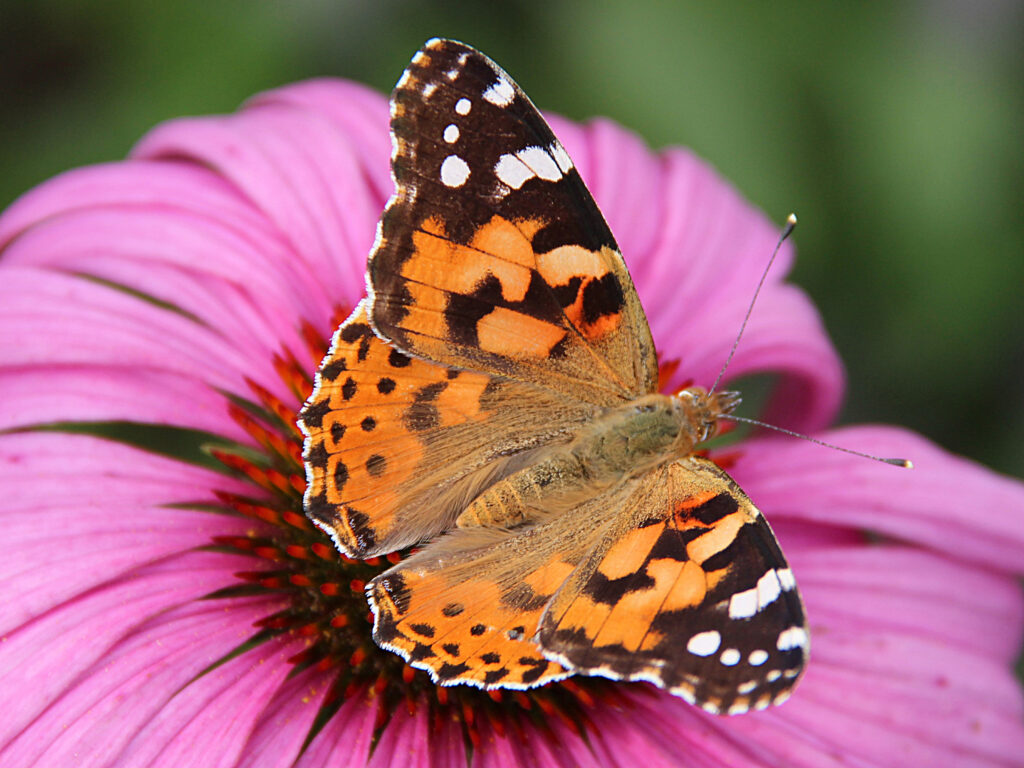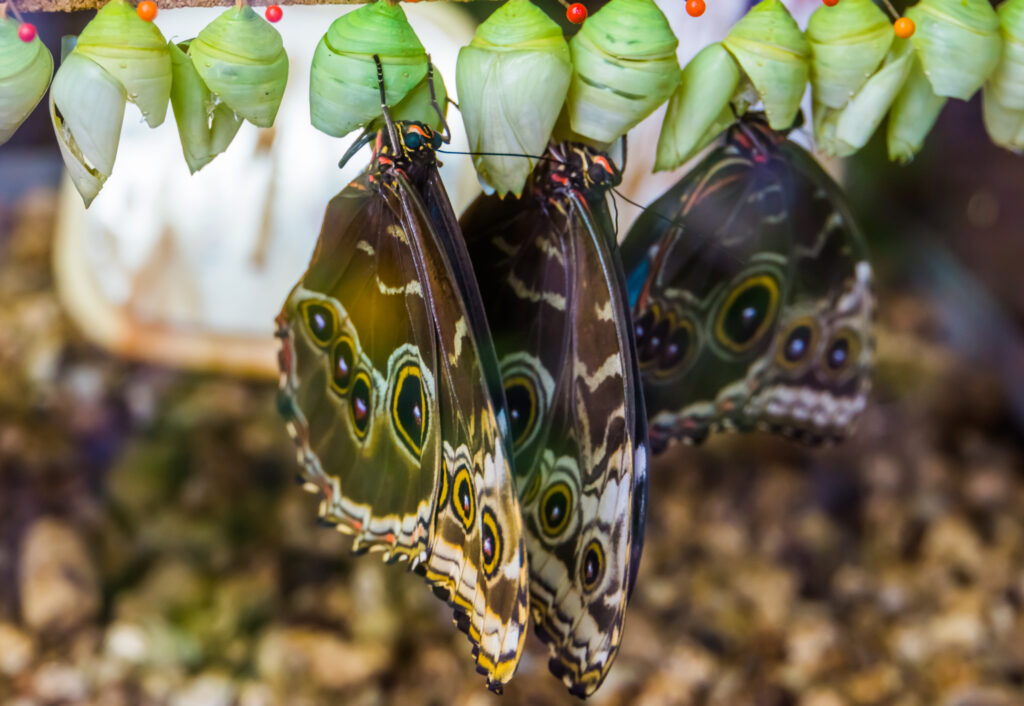1. California – The Land of Regulations Strikes Again

Sunny California isn’t just strict on emissions and plastic straws—it’s also tough on backyard butterfly breeders. Due to concerns about invasive species and protecting native populations like the endangered monarch, the state enforces regulations on raising and releasing butterflies. In fact, you might need a special permit to legally breed them, especially if you’re raising non-native species. California wants to prevent well-meaning gardeners from accidentally throwing off the delicate ecological balance. Sure, your butterfly habitat looks magical, but the state sees it as a potential threat to native flora and fauna. So before you let those wings fly, you might want to double-check the fine print.
2. Oregon – Monarch Mishaps Waiting to Happen

Oregon is another state waving the red flag on butterfly breeding, particularly when it comes to monarch butterflies. The state is trying to prevent the release of captive-bred monarchs that may carry parasites or disrupt local genetics. Oregon encourages planting milkweed and nectar flowers but draws the line at releasing butterflies raised in controlled environments. The concern? You could unintentionally weaken wild populations or spread harmful pathogens like OE (Ophryocystis elektroscirrha). So while your butterfly enclosure may seem like a wholesome hobby, Oregon prefers you let nature take its course. In other words, hands off the cocoons.
3. Illinois – A Butterfly Breeding Gray Zone

In Illinois, things get murky when it comes to raising butterflies. While it’s not outright illegal for residents to raise a few caterpillars at home, larger operations or releasing non-native species without proper authorization could get you in trouble. The state emphasizes protecting native butterfly populations and preventing the accidental release of diseased or genetically weak butterflies. Conservationists in Illinois encourage focusing on habitat restoration rather than captive breeding. Translation: plant native wildflowers, but maybe skip the butterfly nursery. Turns out, your “DIY metamorphosis station” might be more controversial than you thought.
4. Texas – Everything’s Bigger, Including the Butterfly Rules

Texas might be known for its “go big or go home” attitude, but when it comes to butterflies, they prefer you tread lightly. The state has guidelines that discourage unregulated breeding of butterflies like monarchs, especially in bulk for events or mass releases. The concern? Captive-bred butterflies might spread parasites or compete with wild populations, disrupting local ecosystems. While small-scale, educational rearing is usually tolerated, releasing hundreds into the wild is definitely frowned upon—and could require permits. Even in Texas, where cattle roam free, butterflies don’t get a free pass. Yeehaw… but with caution.
5. Washington – Where Butterfly Laws Are as Cloudy as the Weather

Washington state loves its pollinators, but it also loves its environmental safeguards. Raising butterflies in your backyard? Fine, as long as you’re not releasing non-native species into the wild. Releasing butterflies like painted ladies or monarchs without permits could be seen as a violation of wildlife laws, especially near sensitive habitats. Washington wildlife officials stress that captive-bred butterflies can mess with native gene pools or spread harmful parasites. So while it may sound idyllic to release a flurry of butterflies into the misty Pacific Northwest air, you might want to keep it indoors—or risk a slap on the wrist from Mother Nature’s rule enforcers.
6. Michigan – Not Just Concerned About Lakes

Michigan, home of the Great Lakes, also keeps a close eye on butterfly conservation. While casual butterfly raising isn’t outright banned, the state strongly discourages unlicensed breeding programs. Michigan’s Department of Natural Resources worries about non-native species outcompeting delicate local populations and about parasites hitching rides on your fluttery friends. Releasing captive-bred monarchs here might put wild monarch populations at risk, especially when it comes to genetic diversity. Michigan experts suggest sticking to butterfly-friendly gardens instead of playing winged matchmaker. Who knew keeping things “Pure Michigan” might mean skipping the butterfly release?
7. Pennsylvania – The Keystone State is Cautious

Pennsylvania might be rich with rolling hills and scenic farmland, but it’s not thrilled about backyard butterfly releases. State officials are particularly cautious about monarch butterfly breeding, citing concerns about the spread of OE parasites and disrupting wild populations. You might raise a few caterpillars for educational purposes, but releasing large numbers of butterflies—especially for weddings or events—can run afoul of state conservation guidelines. Pennsylvania encourages residents to focus on creating healthy habitats with native plants rather than trying to boost populations via captive breeding. Basically, plant milkweed and wildflowers, but keep your butterfly ranch ambitions in check. Even Amish country has limits on butterfly drama.
8. Georgia – Southern Charm with a Side of Caution

You’d expect the Peach State to embrace all things sweet and charming, including butterflies—but not so fast. Georgia has been stepping up its wildlife regulations in recent years, including those related to butterfly breeding and releases. Releasing captive-bred monarchs here is discouraged due to concerns about disease spread and negative impacts on wild populations. The state urges residents to stick to butterfly-friendly gardening instead of going full lepidopterist. Sure, releasing butterflies at your cousin’s rustic Georgia wedding sounds Instagram-worthy, but it might not be eco-friendly (or entirely legal). In Georgia, charm comes with an environmental fine print.
9. Colorado – High Altitude, High Scrutiny

Colorado’s wildlife officials are watching the skies—and not just for hawks and eagles. The Centennial State is cautious about butterfly breeding, especially given its diverse ecosystems and fragile alpine habitats. The Colorado Parks and Wildlife department advises against large-scale butterfly releases, particularly with species like monarchs, due to the risk of introducing parasites and disrupting migration patterns. Even small backyard breeding projects could have unintended consequences for local pollinator populations. So while it might be tempting to let butterflies loose over the Rockies, Colorado prefers you stick to wildflower planting and habitat preservation. Your butterfly garden might be picturesque, but state officials want the real stars of the show to be naturally occurring pollinators.
10. New Jersey – Strictly Business (and Butterflies)

In New Jersey, where regulations are as common as diners, butterfly breeding has found itself on the radar too. The state has taken steps to regulate the release of captive-bred butterflies due to concerns over disease transmission and invasive species issues. Monarchs are again at the center of the debate, as officials worry about undermining efforts to protect dwindling wild populations. While hobbyists can raise a caterpillar or two, releasing butterflies en masse—especially for events—can get you on the wrong side of New Jersey’s Department of Environmental Protection. Instead, officials recommend focusing on restoring natural habitats and planting native milkweed to support local butterflies. Turns out, in the Garden State, even butterflies have to play by the rules.


